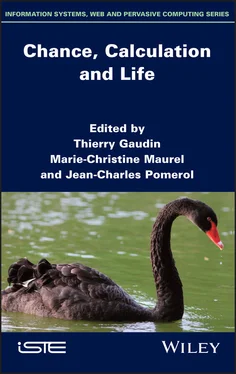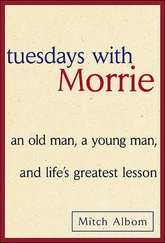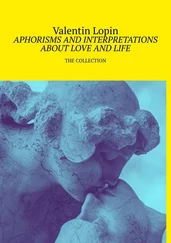Chance, Calculation and Life
Здесь есть возможность читать онлайн «Chance, Calculation and Life» — ознакомительный отрывок электронной книги совершенно бесплатно, а после прочтения отрывка купить полную версию. В некоторых случаях можно слушать аудио, скачать через торрент в формате fb2 и присутствует краткое содержание. Жанр: unrecognised, на английском языке. Описание произведения, (предисловие) а так же отзывы посетителей доступны на портале библиотеки ЛибКат.
- Название:Chance, Calculation and Life
- Автор:
- Жанр:
- Год:неизвестен
- ISBN:нет данных
- Рейтинг книги:3 / 5. Голосов: 1
-
Избранное:Добавить в избранное
- Отзывы:
-
Ваша оценка:
- 60
- 1
- 2
- 3
- 4
- 5
Chance, Calculation and Life: краткое содержание, описание и аннотация
Предлагаем к чтению аннотацию, описание, краткое содержание или предисловие (зависит от того, что написал сам автор книги «Chance, Calculation and Life»). Если вы не нашли необходимую информацию о книге — напишите в комментариях, мы постараемся отыскать её.
Chance, Calculation and Life — читать онлайн ознакомительный отрывок
Ниже представлен текст книги, разбитый по страницам. Система сохранения места последней прочитанной страницы, позволяет с удобством читать онлайн бесплатно книгу «Chance, Calculation and Life», без необходимости каждый раз заново искать на чём Вы остановились. Поставьте закладку, и сможете в любой момент перейти на страницу, на которой закончили чтение.
Интервал:
Закладка:
Note that the available energy consumption and transformation, thus entropy production, are the unavoidable physical processes underlying all biological activities, including reproduction with variation and motility, organisms’ “default state” (Longo et al . 2015). Now, entropy production goes with energy dispersal, which is realized by random paths, as with any diffusion in physics.
At the origin of life, bacterial exponential proliferation was (relatively) unconstrained, as other forms of life did not contrast it. Increasing diversity, even in bacteria, by random differentiation started the early divergence of life, a process that would never stop – and a principle for Darwin. However, it also produced competition within a limited ecosystem and a slower exponential growth.
Gould (1989, 1997) uses the idea of random diversification to understand a blatant but often denied fact: life becomes increasingly “complex”, if one accords a reasonable meaning to this notion. The increasing complexity of biological structures, whatever this may mean, has often been denied in order to oppose finalist and anthropocentric perspectives, where life is described as aiming at Homo sapiens , particularly at the reader of this chapter, the highest result of the (possibly intelligent) evolutionary path (or Design).
It is a fact that, under many reasonable measures, an eukaryotic cell is more complex than a bacterium; a metazoan, with its differentiated cells, tissues and organs, is more complex than a cell and that, by counting neurons and their connections, cell networks in mammals are more complex than in early triploblast (which have three tissues layers), and these have more complex networks of all sorts than diplobasts (like jellyfish, a very ancient life form). This nonlinear increase can be quantified by counting tissue differentiations, networks and more, as very informally suggested by Gould and more precisely quantified in (Bailly and Longo 2009) (see Longo and Montévil 2014b for a survey). The point is: how are we to understand this change toward complexity without invoking global aims?
Gould provides a remarkable, but very informal answer to this question. He bases it on the analysis of the asymmetric random diffusion of life, as constrained proliferation and diversification. Asymmetric because, by a common assumption, life cannot be less complex than bacterial life 10. We may understand Gould’s analysis by the general principle: any asymmetric random diffusion propagates, by local interactions, the original symmetry breaking along the diffusion .
The point is to propose a pertinent (phase) space for this diffusive phenomenon. For example, in a liquid, a drop of dye against a (left) wall diffuses in space (toward the right) when the particles bump against each other locally. That is, particles transitively inherit the original (left) wall asymmetry and propagate it globally by local random interactions. By considering the diffusion of biomass , after the early formation (and explosion) of life, over complexity, one can then apply the principle above to this fundamental evolutionary dynamic: biomass asymmetrically diffuses over complexity in time. Then, there is no need for a global design or aim: the random paths that compose any diffusion, also in this case, help to understand a random growth of complexity, on average. On average, as there may be local inversion in complexity, the asymmetry is randomly forced to “higher complexity”, a notion to be defined formally, of course.
In Bailly and Longo (2009), and more informally in Longo and Montévil (2014b), a close definition of phenotypic complexity was given, by counting fractal dimensions, networks, tissue differentiations, etc., hence, a mathematical analysis of this phenomenon was developed. In short, in the suitable phase space, that is “biomass × complexity × time”, we can give a diffusion equation with real coefficients, inspired by Schrödinger’s equation (which is a diffusion equation, but in a Hilbert space). In a sense, while Schrödinger’s equation is a diffusion of a law (an amplitude) of probability, the potential of variability of biomass over complexity in time was analyzed when the biological or phenotypic complexity was quantified, in a tentative but precise way, as hinted above (and better specified in the references).
Note that the idea that the complexity (however defined) of living organisms increases with time has been more recently adopted in Shanahan (2012) as a principle. It is thus assumed that there is a trend toward complexification and that this is intrinsic to evolution, while Darwin only assumed the divergence of characters. The very strong “principle” in Shanahan (2012), instead, may be derived , if one gives a due role to randomness, along an asymmetric diffusion, also in evolution.
A further but indirect fall-out of this approach to phenotypic complexity results from some recent collaborations with biologists of cancer (see Longo et al . 2015). We must first distinguish the notion of complexity, based on “counting” some key anatomical features, from biological organization. The first is given by the “anatomy” of a dead animal, and the second usually refers to the functional activities of a living organism. It seems that cancer is the only disease that diminishes functional organization by increasing complexity. When tissue is infected by cancer, ducts in glands, villi in epithelia, etc., increase in topological numbers (e.g. ducts have more lumina) and fractal dimensions (as for villi). This very growth of mathematical complexity reduces functionality, by reduced flow rates, thus the biological organization. This is probably a minor remark, but in the very obscure etiology of cancer, it may provide a hallmark for this devastating disease.
1.5. Random sequences: a theory invariant approach
Sequences are the simplest mathematical infinite objects. We use them to discuss some subtle differences in the quality of randomness. In evaluating the quality of randomness of the following four examples, we employ various tests of randomness for sequences, i.e. formal tests modeling properties or symptoms intuitively associated with randomness.
The Champernowne sequence , 012345678910111213, is random with respect to the statistical test which checks equal frequency – a clearly necessary condition of randomness 11. Indeed, the digits 0, 1, 2, …, 9 appear with the right frequency 10 -1, every string of two digits, like 23 or 00 appears with the frequency 10 -2, and by a classical result of Champernowne (1933), every string – say 366647888599991 00200030405060234234 or 00000000000000000000000000000000000 – appears with the frequency 10 -(length of stnng)(10 -35in our examples). Is the condition sufficient to declare the Champernowne sequence random? Of course not. The Champernowne sequence is generated by a very simple algorithm – just concatenate all strings on the alphabet {0, 1, 2, 3, …, 9} in increasing length order and use the lexicographical order for all strings of the same length. This algorithm allows for a prefect prediction of every element of this sequence, ruling out its randomness. A similar situation appears if we concatenate the prime numbers in base 10 obtaining the Copeland-Erdös sequence 235711131719232931374143 (Copeland and Erdös 1946).
Now consider your favorite programing language L and note that each syntactically correct program has an end-marker (end or stop, for example) which makes correct programs self-delimited. We now define the binary halting sequence H(L) = h1h2…hn : enumerate all strings over the alphabet used by L in the same way as we did for the Champernowne sequence and define hi = 1 if the i th string considered as a program stops and hi = 0 otherwise. Most strings are not syntactically correct programs, so they will not halt: only some syntactically correct programs halt. The Church-Turing theorem – on the undecidability of the halting problem (Cooper 2004) – states that there is no algorithm which can correctly calculate (predict) all the bits of the sequence H(L) ; so from the point of view of this randomness test, the sequence is random. Does H(L) pass the frequency test? The answer is negative.
Читать дальшеИнтервал:
Закладка:
Похожие книги на «Chance, Calculation and Life»
Представляем Вашему вниманию похожие книги на «Chance, Calculation and Life» списком для выбора. Мы отобрали схожую по названию и смыслу литературу в надежде предоставить читателям больше вариантов отыскать новые, интересные, ещё непрочитанные произведения.
Обсуждение, отзывы о книге «Chance, Calculation and Life» и просто собственные мнения читателей. Оставьте ваши комментарии, напишите, что Вы думаете о произведении, его смысле или главных героях. Укажите что конкретно понравилось, а что нет, и почему Вы так считаете.












